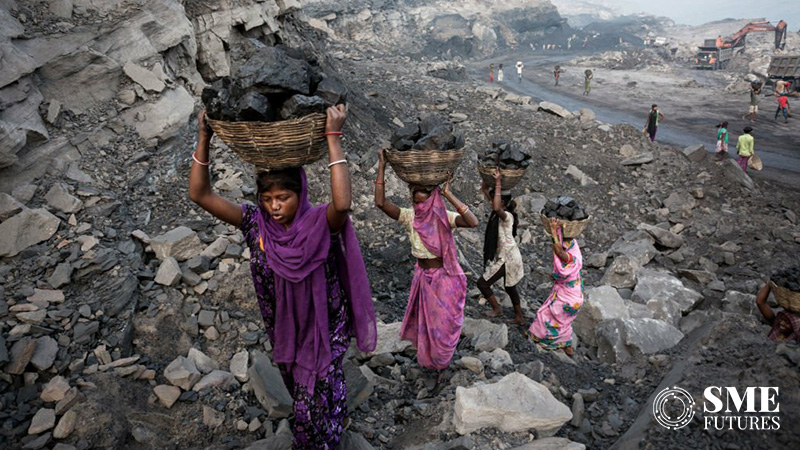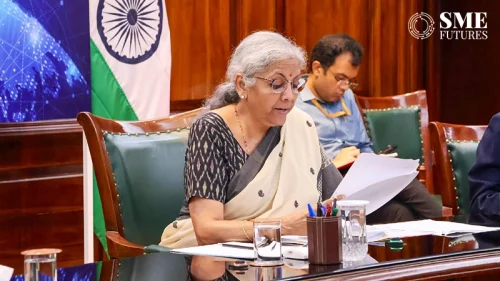The coal industry is expected to shed more than four lakh mining jobs, equivalent to nearly 100 workers per day, by 2035, even without climate pledges or policies to phase out coal, with China and India likely to be the hardest hit, according to a new report.
The primary reason will be the market shift toward cheaper wind and solar power generation and a lack of planning to manage a transition to a post-coal economy, said the report compiled by Global Energy Monitor, a US-based NGO that analyses the evolving international energy landscape.
The report suggests that 9,90,200 coal-mining jobs will cease to exist at operating mines given the foreseeable closures of coal facilities, potentially laying off more than one-third (37 per cent) of the existing workforce.
China and India are expected to be the hardest hit. China’s Shanxi province would witness the largest number of job losses globally — 2,41,900 by 2050 — while Coal India is the producer facing the largest potential job cuts of 73,800 by the mid-century.
The report highlights that data shows 4,300 active and proposed coal mines and projects around the world are cumulatively responsible for more than 90 per cent of global coal production.
Climate commitments to phase out coal power generation could accelerate ongoing trends in coal-mining job losses, even as employment in renewable energy and construction now exceeds 50 per cent of total energy employment.
Coal-mining jobs play a significant role in remote coal regions, acting as anchors of economic activity and sustaining ancillary workforces and employment in local consumer and information economies.
The vast majority of these workers are in Asia, with 22 lakh jobs in the region, and China and India are expected to bear the brunt of the coal-mine closures.
China has more than 15 lakh coal miners who produce over 85 per cent of its coal, accounting for half of the world’s output. Meanwhile, the northern provinces of Shanxi, Henan and Inner Mongolia mine more than a quarter of the world’s coal and employ 32 per cent of the global mining workforce, approximately 8,70,400 people.
India, the world’s second-largest coal producer, has a workforce approximately half the size of Shanxi. The country officially employs approximately 3,37,400 miners at its operating mines, although some studies suggest that the local mining sector has four “informal” employees for every one direct employee.
State-owned Coal India faces the most potential layoffs of 73,800 direct workers by 2050, emphasising the importance of governments being involved in planning for coal worker transitions.
If countries and companies were to pursue plans to phase down coal to limit global warming to 1.5 degrees Celsius, the report suggests that only 2,52,200 miners would be necessary to maintain global coal production, given the current global average labour productivity of 337 workers for every 10 lakh tonnes of coal produced.
Global Energy Monitor finds that most mines expected to close in the coming decades have no planning underway to extend the life of those operations or manage a transition into a post-coal economy.
Dorothy Mei, project manager for the Global Coal Mine Tracker, stressed the importance of viable transition planning. “Coal mine closures are inevitable, but economic hardship and social strife for workers is not. Viable transition planning is happening, like in Spain, where the country regularly reviews the ongoing impacts of decarbonisation. Governments should draw inspiration from its success in planning their own just energy transition strategies.”
Ryan Driskell Tate, coal programme director, Global Energy Monitor, emphasised the need to prioritise workers. “We need to put workers first on the agenda if we want to make sure that just transition is not just talk. With technologies and markets primed for an energy transition, we have to be proactive about the unique concerns of coal miners and their communities.”
Tiffany Means, researcher, noted the significance of government involvement. “The coal industry has a long list of mines that will close in the near term — many of them state-owned enterprises with a government stake. Governments need to shoulder their share of the burden to ensure a managed transition for those workers and communities as we move into a clean-energy economy.”
According to the International Energy Agency (IEA), the electricity sector emitted 12.3 gigatonnes of carbon dioxide in 2020, which is more than any other sector (36 per cent of all energy-related emissions).
Coal remains the largest single source of electricity worldwide and is by far the largest source of electricity sector emissions, contributing just more than one-third of electricity supply but responsible for nearly three-quarters of electricity sector CO2 emissions.
According to the Intergovernmental Panel on Climate Change (IPCC), global coal use needs to fall by 75 per cent by 2030, relative to the 2019 levels, to limit global warming to 1.5 degrees Celsius compared to the pre-industrial era (1850-1900).
At the UN climate talks in Glasgow in 2021, countries agreed to a phase-down of coal power and a phase-out of “inefficient” fossil fuel subsidies — two key issues that had never been explicitly mentioned in the decisions of the UN climate talks before, despite coal, oil and gas being the main drivers of global warming.











